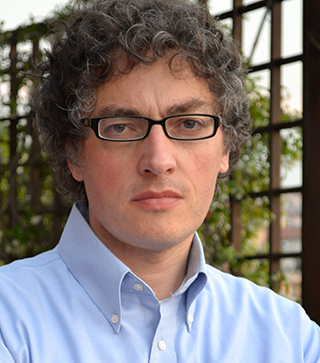

Paolo Ruti, the Chief of the WMO’s World Weather Research Division, says he is pleased with the progress made to date on the Year of Polar Prediction (YOPP), a flagship activity of the World Weather Research Programme’s Polar Prediction Project.
In an interview with ECMWF, Dr Ruti explains that YOPP will help to develop a new observational network to enable better weather predictions in the polar regions.
He says research and operational centres such as ECMWF are making a vital contribution by providing expertise and resources, and they also stand to benefit from the boost in predictability YOPP is expected to bring.
YOPP is part of a ten-year WMO-led activity which is nearing the end of its preparatory phase (2013 to mid-2017), to be followed by a core phase (mid-2017 to mid-2019) and a consolidation phase (mid-2019 to 2022).
What are YOPP’s main goals?
The Year of Polar Prediction is a flagship activity of the Polar Prediction Project, which is one of three main World Weather Research Programme projects running for ten years.
The reason for the long duration is that, if we really want to see progress on new tools, methods, models and services, we need to have a long-term vision. WMO is playing an important role in this respect because other agencies tend to run much shorter projects.
The Polar Prediction Project is being developed to improve our capacity to observe and predict weather events in the Arctic and Antarctica.
The Year of Polar Prediction is designed to bring together people working on observations and on modelling and to make sure that their activities link up well.
In a nutshell, the Year of Polar Prediction is WMO’s way to promote the development of a new observational network that should be used in the Arctic and Antarctica to enable better predictions.
How will this be achieved?
Experiments will be run to see what impact observations flowing through the data assimilation system have on forecast skill.
If we manage to add a lot of radiosonde, buoy and land surface measurements, we can run denial experiments to see what would be the best kind of network.
We also need to be able to say what level of investment countries should be planning for if they want to have good services for this area.
 |
"As one of the leading centres developing data assimilation for coupled systems, including sea ice and the ocean, ECMWF is making a crucial contribution to the Year of Polar Prediction. "And the benefits are mutual: ECMWF will benefit from the impact new observational networks in the polar regions will have on predictability." (Paolo Ruti) |
What is WMO’s role in relation to YOPP?
We have been able to bring together two different perspectives. One is ‘bottom up’: WMO is helping to bring different scientific communities together.
For example, the Year of Polar Prediction planning meeting hosted by ECMWF from 5 to 9 September saw more than 50 people from different organisations – research, academia, meteorological services, universities – sit around a table and work on developing the science.
This is a rare opportunity for people to interact and create a vision of what this observational modelling campaign should be.
The second is the international, United Nations perspective. WMO brings together countries, and its role is to make sure there is agreement among those countries on working together towards shared goals.
We have discussions with country representatives to make sure that the Year of Polar Prediction addresses issues that are relevant to society and that it meets the needs of the polar regions.
How can research and operational centres such as ECMWF help?
As a leading research and operational centre, ECMWF is playing an important role. One way in which it contributes is through its scientists, many of whom are part of the working groups in the World Weather Research Programme.
It is also taking part in coordinated efforts to host databases and to develop ad-hoc modelling experiments and data assimilation experiments.
As one of the leading centres developing data assimilation for coupled systems, including sea ice and the ocean, ECMWF is making a crucial contribution to the Year of Polar Prediction.
And the benefits are mutual: ECMWF will benefit from the impact new observational networks in the polar regions will have on predictability.
What is your assessment of YOPP to date?
Over the last five to ten years, there has been strong political interest in the Arctic and Antarctica. This has created a favourable environment for developing the project.
There has, for example, been positive interaction between WMO and the European Commission. EC funding will help to drive this venture forward. Many countries understand the relevance of the challenge. All this makes me positive about the project’s progress.
But we need to continue to explain the relevance of the Year of Polar Prediction to policy makers and ensure they continue to fund the project.
One of the biggest challenges, therefore, is to communicate effectively, to citizens as well as policy makers, what the Year of Polar Prediction is trying to achieve and how this is relevant to society. In the era of social media, this can be a challenge.
Top photo: Mike Watson Images/moodboard/Thinkstock
